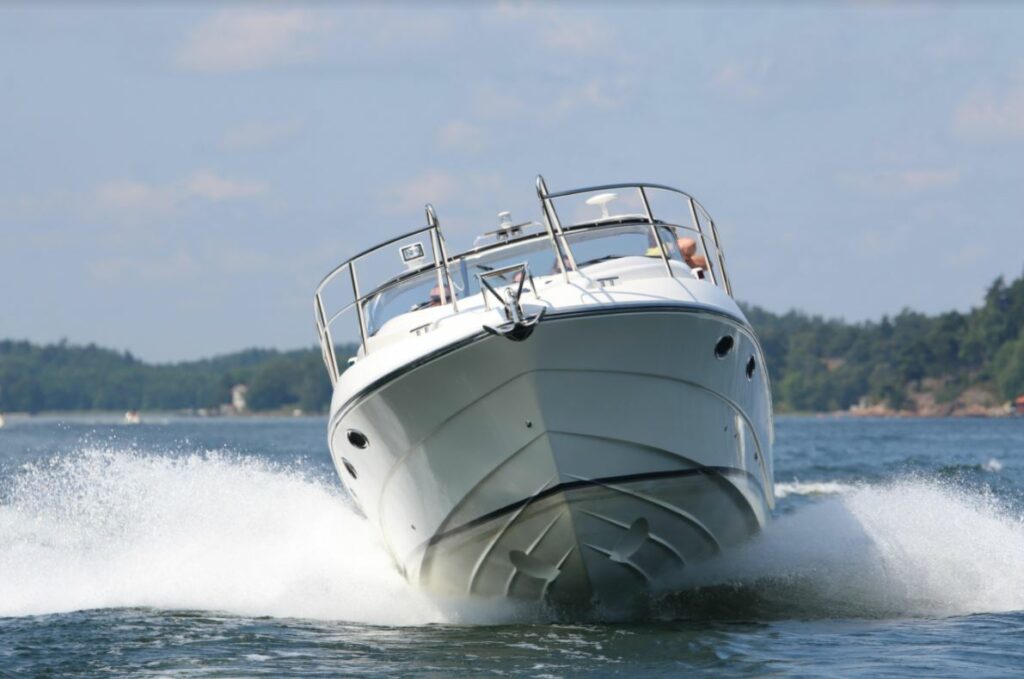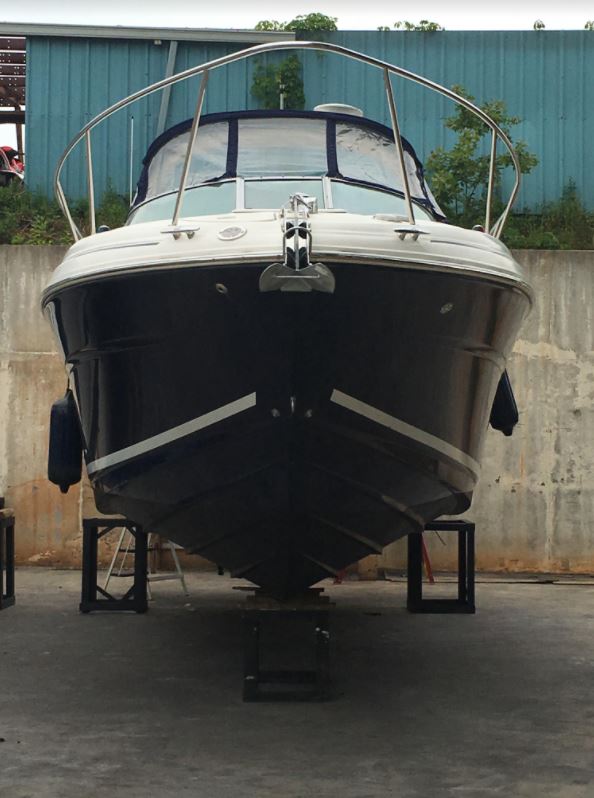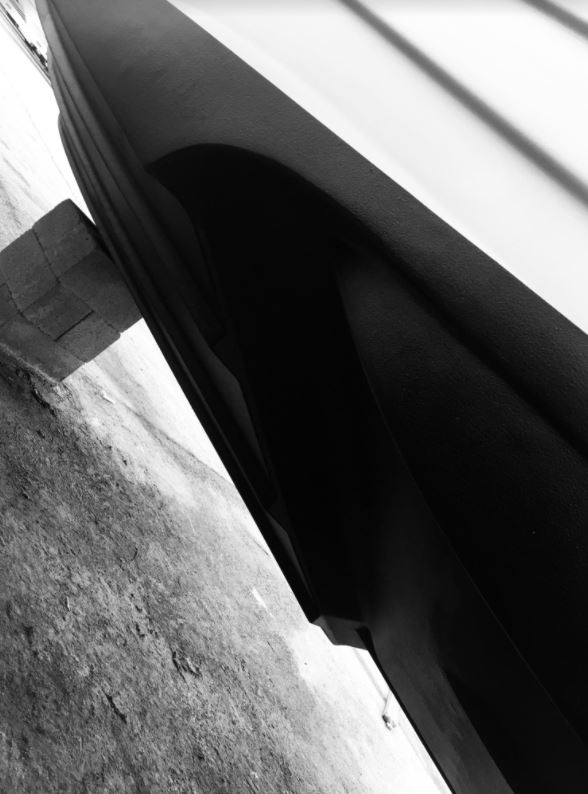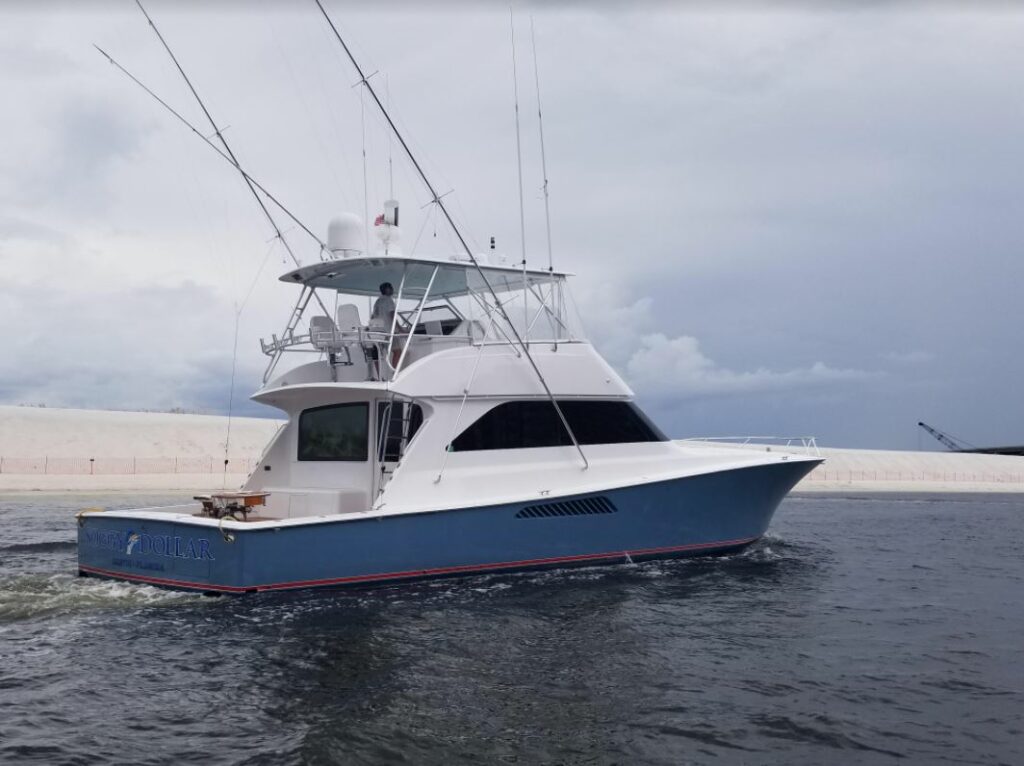Boat bottom painting is necessary for any boat that stays in the water continuously for long periods. Bottom paint, also called anti-fouling paint, deters the growth of aquatic organisms, plants, and algae that damage your boat’s hull, affect the boat’s performance, and add a continuous ongoing maintenance chore.
If your boat is pulled out of the water frequently and stored on a trailer, a lift, or a rack, bottom paint is not required. Just be sure to wash your boat and towel it down to prevent a build-up of aquatic growth. Use a quality wax as a protectant.

Painting the Boat Bottom With Anti-Fouling Paint
If your boat spends long periods in the water, boat bottom paint is required. What could be worse than showing up at your boat for a weekend outing and seeing that there is needed maintenance to be done?
In saltwater, barnacles are a significant issue. While barnacles may not actually damage the gel coat surface of your fiberglass boat, removing them often does cause damage. In wooden boats, aquatic organisms can bore into the wood, causing severe damage.
In freshwater, zebra mussels, plants, and algae adhere to an untreated bottom, and it’s a constant maintenance headache to keep scrubbing it off. The solution is a bottom paint that contains copper plus a biocide that holds the bottom free of undesirable aquatic growth.
Barnacles, zebra mussels, and algae growth all add drag to the boat and dramatically affect a boat’s performance.

What Type of Boat Bottom Paint Is Best?
This depends on how you use your boat. If your boat stays in the water and sits, then you need “hard” bottom paint. For a high-performance boat, challenging bottom paint will give you faster speed. One hitch is that if you use complex to paint and pull your boat out of the water and allow the paint to oxidize, it lessens the protective qualities of the color.
If you use your boat frequently, and if you pull your boat out of the water at times, an “ablative” boat bottom paint is a great choice. Ablative bottom paint is self-polishing paint that wears off the surface paint as your boat moves through the water. As the paint sloughs off, it exposes fresh paint that gives your bottom continuous protection. When you put your boat back into the water, it softens the paint, and the protection is activated.
If your boat is used infrequently, ablative paint is not the paint for you. This is because ablative paint requires your boat to be in motion to expose the fresh paint surface. Conversely, if you have a high-performance boat and often run at very high speed, then ablative paint is too soft and will wear off quickly.
Bottom paint contains copper and biocide additives that discourage the growth of aquatic organisms.
An important note is to not use copper bottom paint on any metal surfaces like an aluminum boat, pontoons, exhaust, or motor parts. The copper will create a chemical reaction and will corrode the metal. Instead, use anti-fouling paint designed specifically for metal.

What Are the Steps to Bottom Painting?
The first step is to determine the waterline and create a straight tapeline that makes a clean border between the bottom and the side of the boat. Usually, previous aquatic growth will direct you to the waterline.
If your boat bottom has never been painted, the next step is to take 60 or 80-grit sandpaper and scuff sand the gel coat to remove any wax or debris and create a surface that the paint can adhere to. Also, fill any chips in the gel coat at this time and sand smooth.
Painting over a previously unpainted gel coat first requires a barrier coat that protects the gel coat and acts as a primer that the bottom paint adheres to.
If your boat already has bottom paint, know what kind of paint it is. If you bought a used boat, and you’re not sure, test it by smearing your fingers across the paint. If paint dust comes off on your fingers, it’s ablative paint.
A very important rule is that you can apply ablative paint over hard paint. But you cannot apply hard paint over ablative paint, as it will simply wear off. If you want to use hard paint over ablative paint, the old paint must be removed entirely.
When painting over a previously painted surface, light sanding is required to remove any scum and to create a good adhesive surface.
Generally, 1 or 2 coats of anti-fouling paint provide sufficient protection. Interestingly, adding cayenne pepper to the paint boosts the performance of the paint to further inhibit aquatic growth.
After painting, pull the tape off while the paint is fresh. It is good to launch your boat after the paint dries overnight or soon thereafter. Be sure of the paint manufacturer’s recommendation.
How Often Does a Boat Bottom Need to be Re-Painted?
If your boat is in the water year-round, the bottom should be painted every year. For boats that go in and out of the water, every 2-3 years is sufficient.
Many boaters that use ablative paint will alternate bottom paint colors so they can tell when the newest paint layer is thin and becoming ineffective. Also, if the boat has been out of the water for a long time, take an abrasive scrub pad and scuff the ablative paint surface to refresh the effectiveness of the paint.

Paint Your Boat Bottom as a DIY, or Hire a Professional Service
It is possible to paint the bottom of your boat yourself. However, you will need to educate yourself on the do’s and don’ts of the process to avoid costly mistakes.
Keep in mind that the dust from sanding anti-fouling paint is toxic. Appropriate personal protective equipment is required, like a mask, safety glasses, and gloves.
Further, consider that if you choose petroleum-based paint, you’ll want a respirator. Thankfully, there are water-based paints now available that are very effective and much less toxic to the person applying the paint. But certain boat performance applications require a more toxic paint.
Also, consider that the project is likely a much larger project than you think. Professional services use special stands to hold the boat, so all parts of the bottom are easy to access. It is a reality that a professional service is going to give you a professional result, and a DIY project may very well yield something less desirable.
Some of the benefits of using a professional service are that they can direct you to the best product for your boat, depending on how you use it. They can also contain toxic dust in a shop area. They have a protected space to work in with all of the right materials and equipment. And they will give a paint job that is smooth and professional.
If old paint needs to be removed, you almost surely need a professional shop with specialized equipment to blast off the old paint using methods that ensure the fiberglass is not damaged.

Conclusion
Boat bottom paint is required for boats that remain in the water long term. Without protective paint to inhibit aquatic growth, damage to the hull of your boat is inevitable.
There are many choices for types of bottom paint and the level of protection offered. A professional service can help you make the right choice for your boat and your boating style.
For boats that remain in the water, fresh bottom paint is required annual maintenance. The benefits are that you won’t have ongoing maintenance to continually scrub the bottom of your boat, and the organisms won’t cause damage to your hull.
For supplies and information for a DIY project or to engage our professional boat bottom painting services, contact service@lakesidemarine.com to learn more about how bottom painting can benefit you and protect your investment.




0 Comments